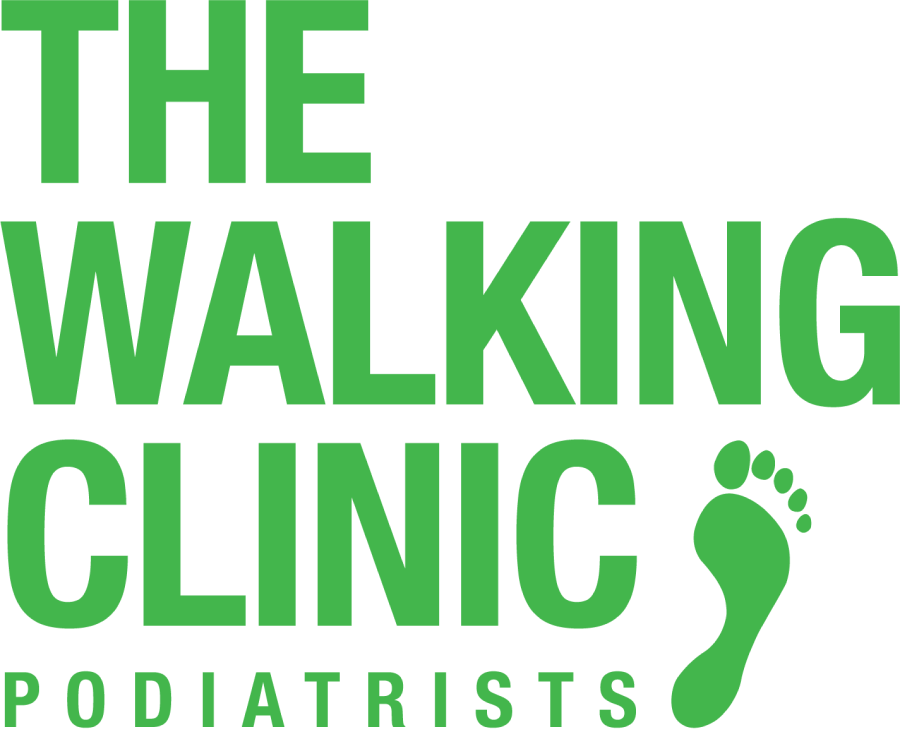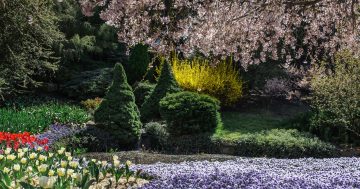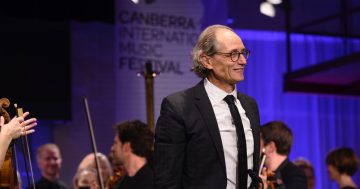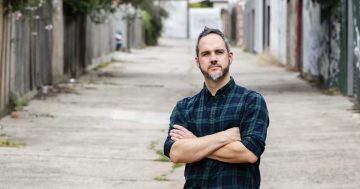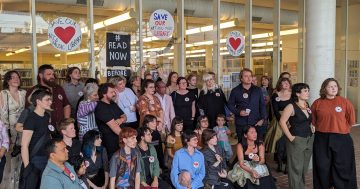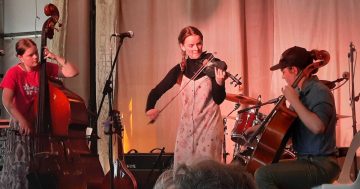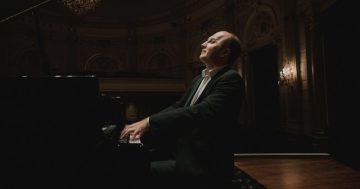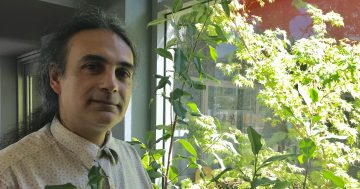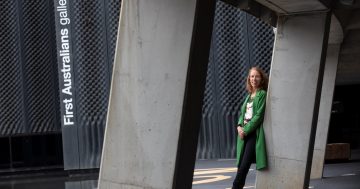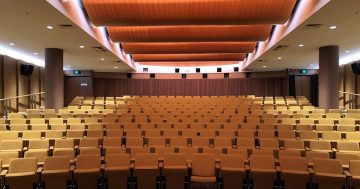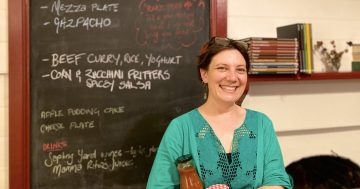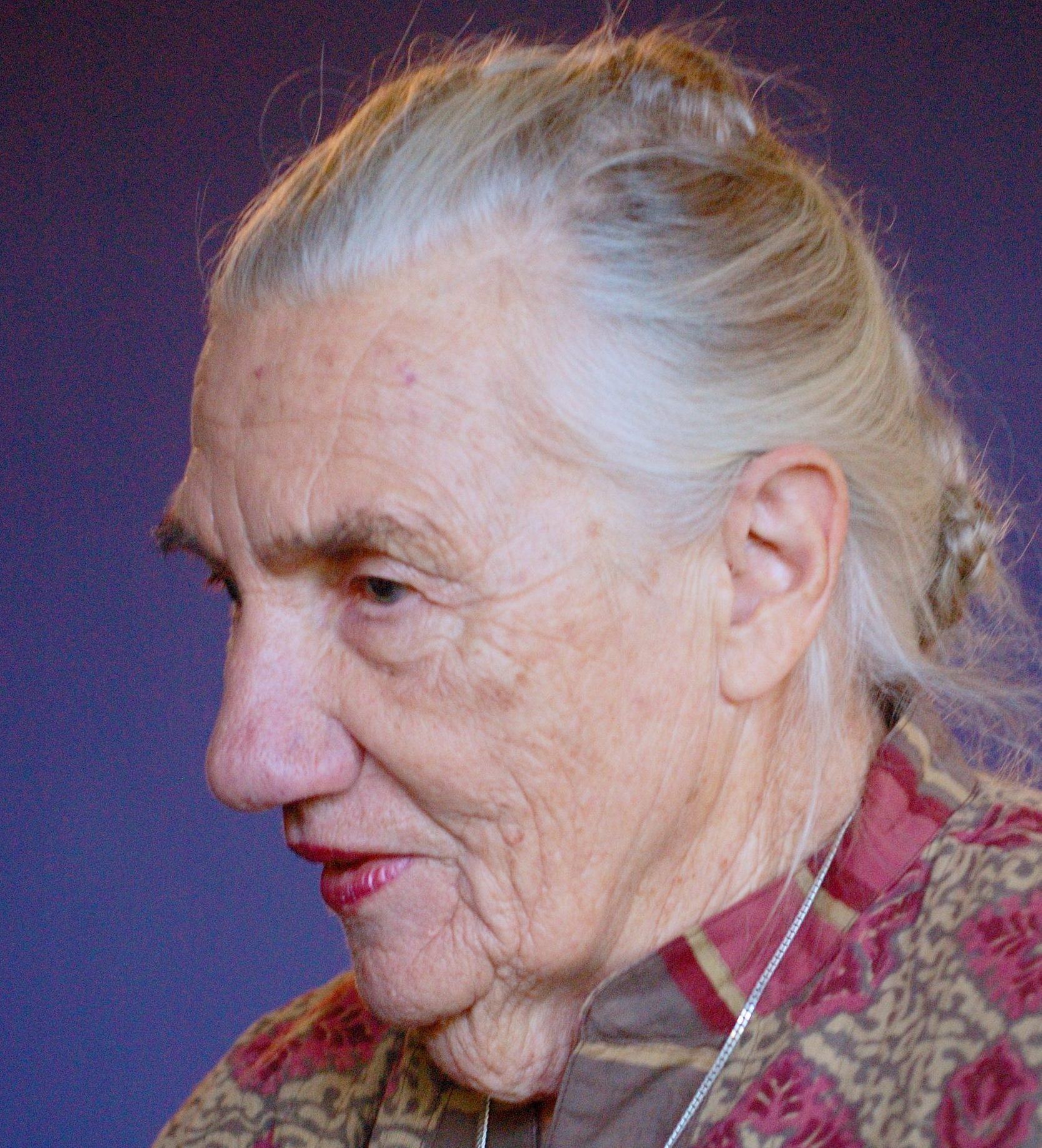
Barbara Blackman was muse, supporter and inspiration to the Australian arts world. Photo: Peter Hislop, Canberra International Music Festival.
She bore the surname of one of Australia’s most significant post-war artists, but Barbara Blackman, who has died at 95, blazed her own remarkable trail as a writer, mentor and supporter of many artists during a long and extraordinarily rich life.
An author, librettist, essayist and poet, she gathered a lively group of friends wherever she went, enriching the lives of those she met with her warmth and hospitality.
Born Barbara Patterson in Brisbane in 1928, she grew up surrounded by books and music from an early age. She was diagnosed with optic atrophy in 1950, in her early 20s, and her vision rapidly declined until she was completely blind.
Throughout her life, she was an activist for the visually impaired, determined they be treated with dignity.
In a 2016 interview, Barbara said that as her sight declined, her vision increased.
“I began to look more closely, not at things, but at a world closer to myself, looking from an inner space to one further within … Immediately the substance of the universe drew together, redefined, peopled itself anew,” she said.
“I saw light and went on seeing it although I was blind.”
Barbara met painter Charles Blackman at his 21st birthday party and was thrust into Australia’s post-war modern arts revolution.
He was a member of the Antipodeans, a group of Melbourne painters including Arthur Boyd, David Boyd, John Brack, Robert Dickerson, John Perceval and Clifton Pugh, all of them ardent Bohemians who challenged the staid status quo of the Australian art world.
Barbara was her husband’s muse for many of his best-known works, including the Alice in Wonderland series, and also modelled for Clifton Pugh and Fred Williams. Her income as an artist’s model and from the blind pension and his earnings as a kitchen hand initially sustained the family.
Her marriage with Charles lasted 27 years but was disrupted by his increasing alcoholism and ended in 1978. It produced three children and she later described it as “one of the great marriages, which lasted as long as possible, and a bit longer”.
She subsequently married Marcel Veldhoven and lived for a time on the South Coast, where they established a spiritual retreat. Following the end of that relationship, she moved to Canberra, where she had many friends.
Nugget Coombes and the poet Judith Wright were among her closest associates and a collection of letters between her and Wright, Portrait of a friendship: the letters of Barbara Blackman and Judith Wright 1950–2000 was published in 2007.
Barbara’s home in Yarralumla became a centre for lively debate, expansive birthday parties and enduring friendships. She also became a major contributor to the National Library of Australia’s oral history program, for which she travelled around the country interviewing artists and thinkers.
In 2006, Barbara made a major donation of $600,000 to the Canberra International Music Festival (CIMF), significantly expanding the Festival’s capacity and artistic ambition and laying the groundwork for a substantial and transformative commissioning program.
Subsequent commissions established CIMF’s place in the contemporary Australian art music world as a centre for innovation and excellence.
Barbara also donated $10,000 to the ANU and $250,000 to the Australian Chamber Orchestra and sustained many individual artists. In 2006, she was awarded the Australian Contemporary Music Award for Patronage. In 2012, she was appointed Officer of the Order of Australia.
Music teacher Adrian Keenan, whom Barbara had first known in the 1970s when he was a student at the Sydney Conservatorium, became her carer in later life.
In her final years, she was confined to bed, blind and almost deaf, but she maintained a keen interest in philosophy and intellectual endeavours until the end of her life. She entered Clare Holland House only days before her death.
Barbara is survived by her children Auguste and Christabel. Her son Barnaby predeceased her.
Former CIMF artistic director Chris Latham recalls that Barbara’s mantra was, “Let it be done through me, not by me”, and that “one of the highest forms that love can take is encouragement”.
She encouraged artists to keep going, giving them the support and means to fulfil their vision and together with her own unquenchable spirit, that may be her greatest achievement.





